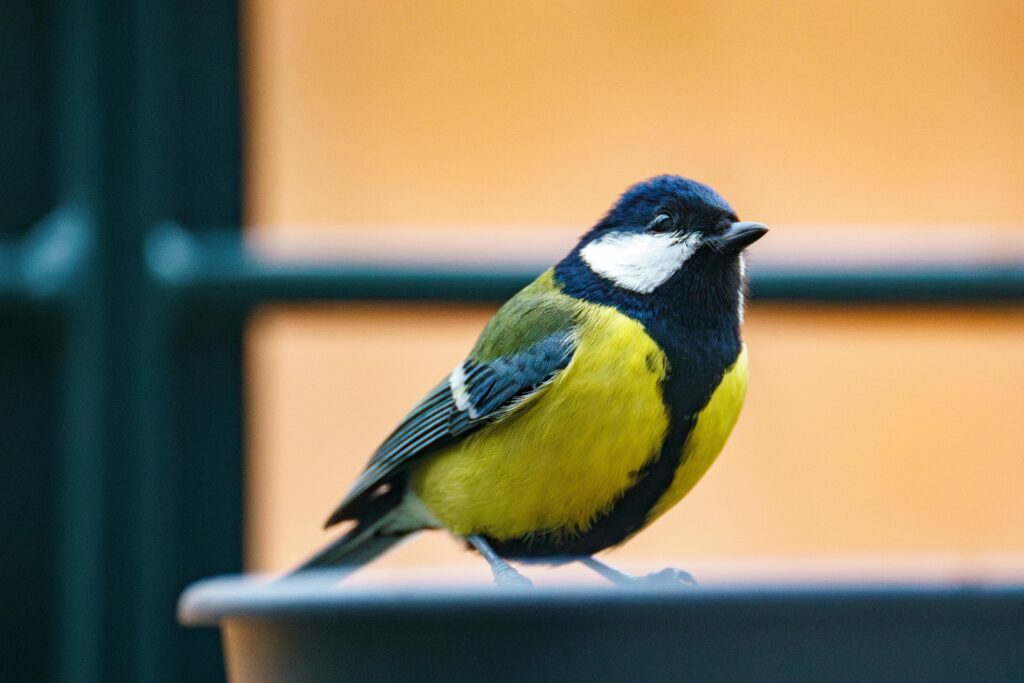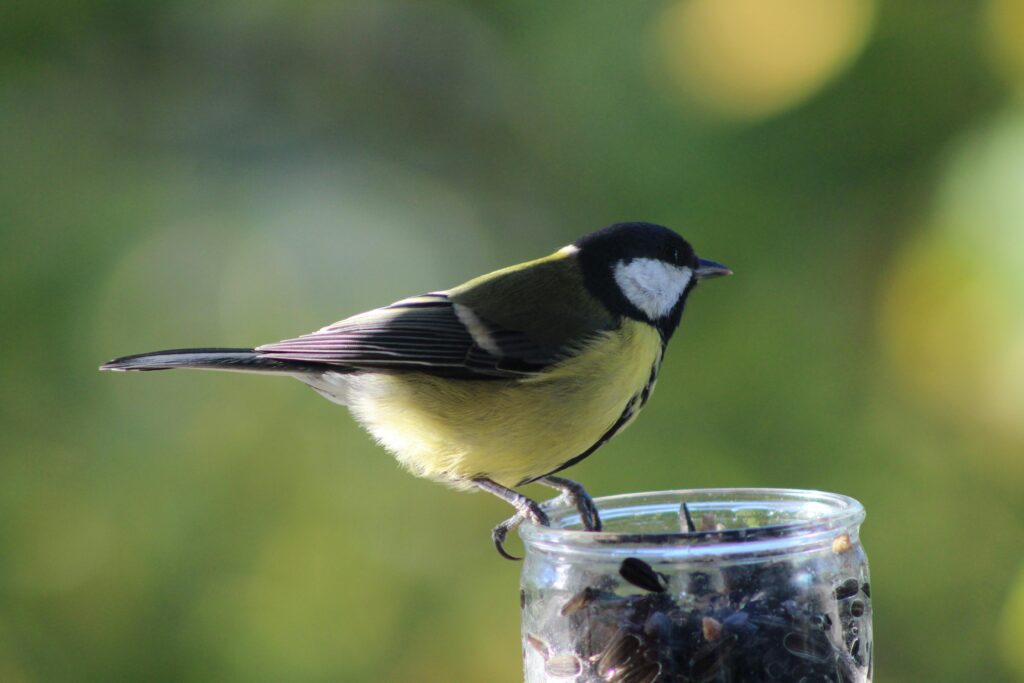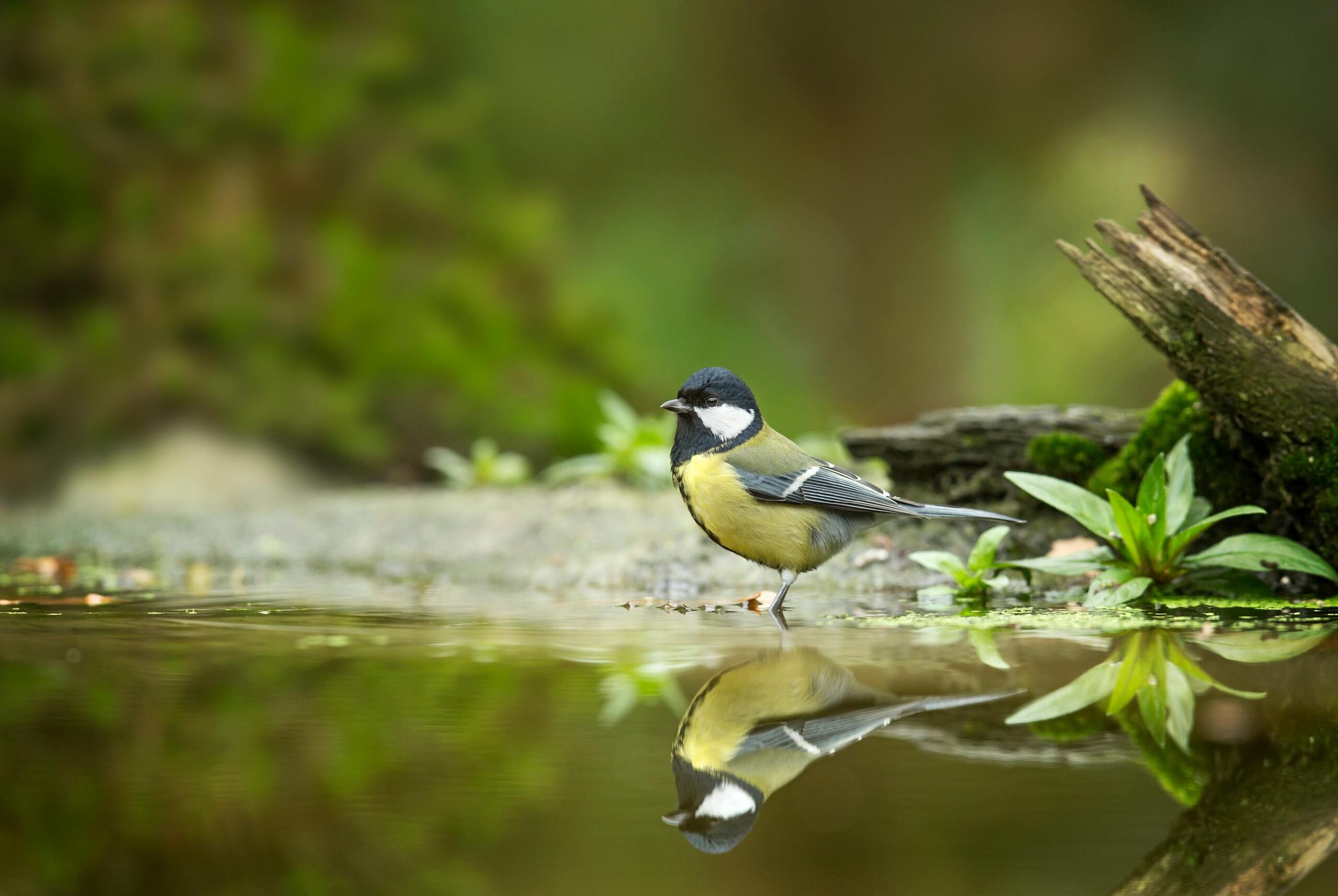The great tit (Parus major) is a widely recognized and beloved songbird found across Europe, Asia, and parts of North Africa. Known for its striking plumage and melodic calls, this species thrives in a variety of habitats, from dense forests to urban gardens. Their adaptability and curious behavior make them a favorite among birdwatchers and researchers alike.
This article delves into the fascinating world of great tits, exploring their natural habitat, physical characteristics, diet, breeding behaviour, and ecological significance. Additionally, it highlights the conservation efforts needed to safeguard their populations amid environmental challenges. Whether you’re a seasoned ornithologist or a casual bird enthusiast, this guide offers comprehensive insights into one of nature’s most charming avian species.

The Natural Habitat of the Great Tit
Great tits are highly adaptable birds, making their homes in a wide range of environments. From temperate woodlands to urban parks and gardens, they thrive wherever food and shelter are available. Their ability to nest in both natural cavities and artificial nest boxes has further enhanced their presence in human-inhabited areas.
These birds are commonly found in regions with diverse vegetation, including deciduous and mixed forests, as well as shrublands. During winter, their adaptability shines as they move closer to human settlements, where they take advantage of bird feeders and accessible resources. Their habitat preferences vary slightly across their range, influenced by climatic and ecological conditions.
Preferred Environments and Adaptation Strategies
Great tits demonstrate remarkable flexibility in adapting to different environments. In forested areas, they rely on tree cavities for nesting and dense foliage for cover. Urban populations, on the other hand, benefit from gardens, parks, and even man-made structures such as birdhouses.
Key adaptation strategies include:
- Diet versatility: They shift from feeding on insects and larvae in spring and summer to seeds and nuts in colder months.
- Nesting ingenuity: Great tits readily occupy nest boxes, especially in areas where natural cavities are scarce.
- Social behavior: During winter, they often join mixed-species flocks, improving foraging efficiency and protection against predators.
Their ability to balance natural instincts with human influence has cemented their status as one of the most widespread and successful songbirds in the world.

Physical Characteristics of Great Tits
The great tit is a visually striking bird, easily recognized by its bold coloration and distinctive markings. It is one of the largest members of the tit family, measuring about 12–14 cm in length, with a wingspan of 22–25 cm. Males and females exhibit similar plumage, although subtle differences in size and intensity of coloration help distinguish them during close observation.
Key features include their bright yellow underparts, contrasted with a black stripe running down the centre. Their glossy black head with white cheek patches adds to their striking appearance. The back is a soft olive-green, and the wings display a combination of blue and black feathers with a characteristic white wing bar. The Great tit has a very similar look to the blue tit with the yellow front but have a distinctive black stripe.
How to Identify Great Tits in the Wild
Identifying great tits is relatively straightforward due to their unique markings and active behavior. To spot them in the wild, consider these tips:
- Listen for their calls: Great tits produce a variety of vocalizations, including a two-note “teacher-teacher” song that is easy to recognize.
- Look for movement: They are often seen flitting through trees, shrubs, or even visiting bird feeders in search of food.
- Examine their plumage: The bold yellow chest and black head with white cheeks are unmistakable. Male great tits typically have a wider and darker black stripe on their chest compared to females.
- Seasonal behaviour: During winter, they are more likely to visit urban areas, where they form small groups to forage for food.
These characteristics, coupled with their approachable nature, make great tits a delight for birdwatchers of all levels.

Diet and Feeding Habits of Great Tits
Great tits have a highly versatile diet, which has played a key role in their widespread success. As omnivorous birds, they consume a diverse range of food items, adapting their diet according to seasonal availability. During the warmer months, insects and larvae dominate their diet, providing the protein essential for raising chicks. In the colder months, they shift to seeds, nuts, and berries, often relying on human-provided bird feeders to supplement their food supply.
This ability to exploit various food sources allows them to thrive in both natural habitats and urban settings. They are known to forage actively, using their keen eyesight and acrobatic movements to locate food in trees, shrubs, and even on the ground.
Seasonal Food Preferences and Foraging Behavior
The feeding habits of great tits vary significantly with the seasons. Here’s a closer look at their diet and foraging strategies:
- Spring and Summer:
- Primary diet: Insects, spiders, and caterpillars.
- They often search under leaves and bark, consuming pest species like aphids and moth larvae.
- This protein-rich diet is particularly important for feeding their rapidly growing chicks.
- Autumn and Winter:
- Primary diet: Seeds, nuts, and berries.
- They cache food items in crevices or under leaves, a strategy to ensure survival during food-scarce periods.
- They frequently visit bird feeders, favoring sunflower seeds and peanuts.
- Foraging Behavior:
- Great tits are highly active and opportunistic feeders.
- Their acrobatic movements allow them to reach food in hard-to-access places.
- They are also known to forage in mixed-species flocks, which helps reduce predation risks and improves food-finding efficiency.
This adaptability in their diet and foraging techniques ensures their survival even in challenging environmental conditions.
Breeding and Mating Behavior
Great tits exhibit fascinating breeding and mating behaviors that have made them a favorite subject of ornithological studies. These birds typically form monogamous pairs during the breeding season, although extra-pair copulations are not uncommon. Breeding usually begins in early spring, when food availability is abundant, ensuring the best chance of survival for their offspring.
The female takes the lead in nest building, constructing it in natural cavities such as tree holes or artificial nest boxes. The nest is lined with soft materials like moss, feathers, and animal fur to provide warmth and protection for the eggs. A typical clutch consists of 5–12 eggs, which are incubated solely by the female for about two weeks.
Both parents are actively involved in feeding and protecting the chicks once they hatch. The young fledge approximately three weeks after hatching, but they continue to rely on their parents for food and guidance for a short period.
Nesting Practices and Parental Care
The nesting and parenting practices of great tits are critical to their reproductive success. Here are some key aspects:
- Nest Site Selection:
- Great tits prefer natural cavities, such as hollow trees, but readily use man-made nest boxes.
- The availability of suitable nesting sites directly influences their population density in a given area.
- Egg Laying and Incubation:
- Females lay one egg per day, typically early in the morning.
- The eggs are white with reddish-brown speckles and are incubated for 13–15 days.
- Chick Rearing:
- Both parents feed the chicks, with the male often bringing more food during peak demand periods.
- Caterpillars and other high-protein insects form the primary diet of nestlings.
- Post-Fledging Care:
- After leaving the nest, fledglings stay close to their parents for about a week.
- During this time, they learn essential survival skills such as foraging and avoiding predators.
This combination of diligent parenting and strategic nesting practices ensures that great tits maintain healthy populations across their range.
The Role of Great Tits in Ecosystems
Great tits play a significant role in maintaining the health and balance of ecosystems. As insectivorous birds, they act as natural pest controllers, consuming large quantities of insects, including those considered harmful to crops and plants. Their diet not only benefits agricultural systems but also helps regulate insect populations in forests and gardens.
Additionally, great tits contribute to seed dispersal and pollination. While not primary pollinators, they may inadvertently assist in the pollination process as they forage for nectar or insects on flowering plants. This interaction, though subtle, supports the growth and reproduction of certain plant species.
Contribution to Pest Control and Plant Pollination
Great tits’ ecological contributions can be observed in various ways:
- Natural Pest Control:
- By consuming caterpillars, aphids, and other insects, they reduce the impact of pests on crops and ornamental plants.
- During the breeding season, they can collect thousands of insects daily to feed their chicks, significantly reducing pest populations in their territories.
- Seed Dispersal:
- By eating seeds and fruits, great tits help distribute plant seeds to new locations, supporting plant diversity and growth.
- Their foraging habits often lead to unintentional planting of seeds, aiding natural reforestation.
- Pollination Assistance:
- Though less common, great tits occasionally visit flowering plants, especially when searching for insects.
- This interaction can result in the transfer of pollen, benefiting certain plants that rely on incidental pollinators.
Their dual role as both predators and seed dispersers highlights the importance of great tits in maintaining ecological balance. By supporting pest control and aiding plant reproduction, they contribute to the overall health of the ecosystems they inhabit.
Conservation of Great Tits
While great tits are currently classified as a species of “Least Concern” by the International Union for Conservation of Nature (IUCN), they still face challenges that threaten their populations in specific regions. Habitat loss due to urbanization and deforestation is a primary concern, as it reduces the availability of nesting sites and food sources. Additionally, climate change has impacted their breeding and foraging behaviors, potentially disrupting their ecological balance.
Conservation efforts, both at the local and global levels, have proven beneficial for maintaining their populations. Initiatives such as providing nest boxes, maintaining green spaces, and promoting sustainable agricultural practices play a vital role in supporting these birds. Awareness campaigns encouraging bird-friendly environments in urban areas have also contributed to their well-being.
Challenges and Efforts to Protect Their Populations
Several challenges and conservation efforts are worth noting:
- Challenges:
- Habitat Loss: Deforestation and urban development reduce natural nesting and foraging areas.
- Climate Change: Altered temperatures and seasonal patterns affect the availability of food and breeding conditions.
- Predation and Competition: Increased competition with invasive species and predation by domestic cats can impact population dynamics.
- Conservation Efforts:
- Nest Boxes: Providing artificial nest boxes in urban and rural areas has been a highly effective measure.
- Habitat Restoration: Reforestation and the creation of urban green spaces ensure suitable environments for nesting and feeding.
- Public Awareness: Campaigns encouraging people to install bird feeders and nest boxes have significantly improved survival rates, especially during winter.
- Research and Monitoring: Continuous studies help identify emerging threats and adapt conservation strategies accordingly.
By addressing these challenges and implementing effective conservation practices, great tits can continue to thrive in both natural and urban landscapes. Their resilience and adaptability, coupled with human intervention, make their future promising.
Conclusion
The great tit (Parus major) is a remarkable bird species that exemplifies adaptability and resilience. From their vibrant plumage and melodic calls to their crucial role in pest control and ecosystem health, these birds are an integral part of the natural world. Their ability to thrive in diverse environments, including urban spaces, highlights their importance not only as a species but also as a symbol of coexistence between wildlife and human activity.
Despite their widespread presence, great tits face challenges such as habitat loss, climate change, and competition for resources. However, through concerted conservation efforts, including nest box programs, habitat restoration, and public education, their populations can remain stable. By supporting initiatives that protect great tits and their habitats, we contribute to preserving the biodiversity that enriches our planet.
Whether you’re a bird enthusiast or someone looking to connect with nature, observing great tits offers a glimpse into the beauty and complexity of the avian world. Their presence serves as a reminder of the delicate balance that sustains life on Earth, inspiring us to protect and cherish it.
FAQs
What do great tits eat during the winter months?
Answer: During winter, great tits primarily eat seeds, nuts, and berries. They often visit bird feeders for sunflower seeds, peanuts, and suet to supplement their diet when natural food sources are scarce.
Where can great tits typically be found?
Answer: Great tits are highly adaptable and can be found in a variety of habitats, including deciduous and mixed forests, urban gardens, parks, and shrublands. They prefer areas with abundant vegetation and nesting opportunities.
How do great tits contribute to pest control?
Answer: Great tits are insectivorous during spring and summer, consuming large quantities of insects such as caterpillars, aphids, and moth larvae. This natural pest control benefits crops, forests, and gardens.
How can I attract great tits to my garden?
Answer: You can attract great tits by providing bird feeders with sunflower seeds, peanuts, or suet. Installing nest boxes and maintaining a garden with trees, shrubs, and flowering plants also creates a welcoming habitat for them.
What threats do great tits face in their natural habitats?
Answer: Great tits face threats such as habitat loss due to urbanization and deforestation, climate change affecting food availability and breeding, and predation from domestic cats and invasive species.

